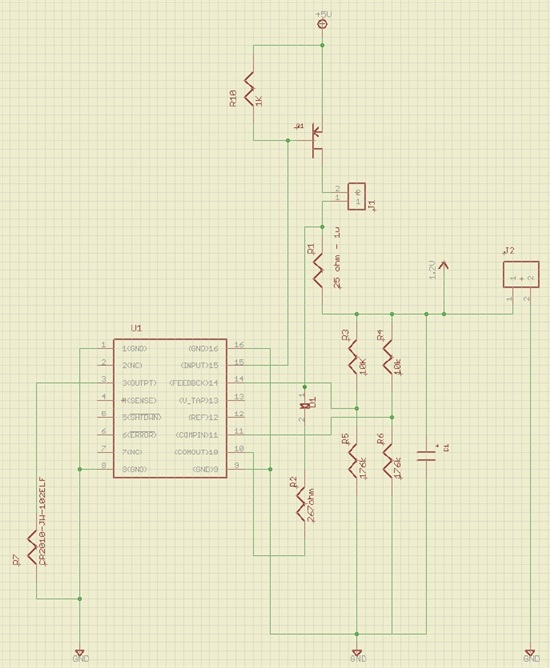Thanks for the reply I'll check that out and post back when I get a chance.
I've got one more question. I've got a circuit using the LP2953 to charge a single cell NiMH battery. It works fine until I get close to the 1.23v comparator reference. Once my feedback pin sees something like 1.19 -1.2 volts my current gets cut in half. I'm confident in the rest of my circuit because when I ground the feedback pin i get my expected 200mA current into the battery. Also, when the battery voltage is low from being used (like around 0.9v) I get the full 200mA for a long time until again, my feedback rises to a value pretty close to the 1.23v threshold. Does this make sense? I assumed that until i hit the 1.23v on the feedback pin the error amp would drive the transistor so that it conducts completely and when the feedback pin hits 1.23 volts it shuts off, but it seems like there is some grey area where it is on less or something the closer to 1.23v I get.
I'm using the input-output pins to sink current through a bjt which is my constant current path to my battery. It seems like the closer I get to Vref the less the error amp is on and therefore I get less of a current sink on my bjt which means it isn't on enough.
Here is a rough image of my circuit just to give you an idea of what I'm doing. I've changed some of the R values, but this gets the idea across.
I'm charging my battery up to ~1.46 volts. With my current R values (not the ones shown on the schematic) I get 200ma through the device until my feedback pin gets to about 1.19 volts. Shouldn't this give me constant current until I reach the 1.23? I've also tied the error pin high on my breadboard and that hasn't helped either.
Thanks again!


